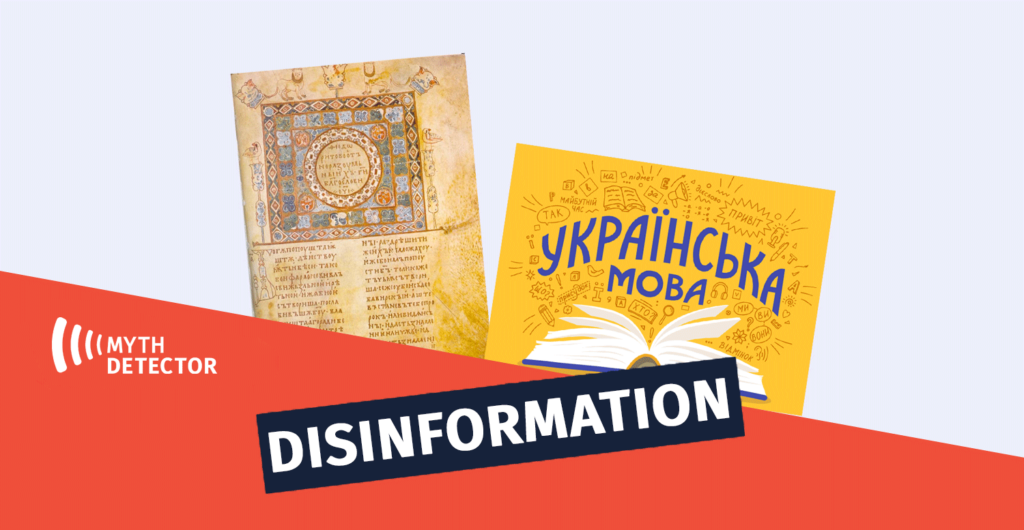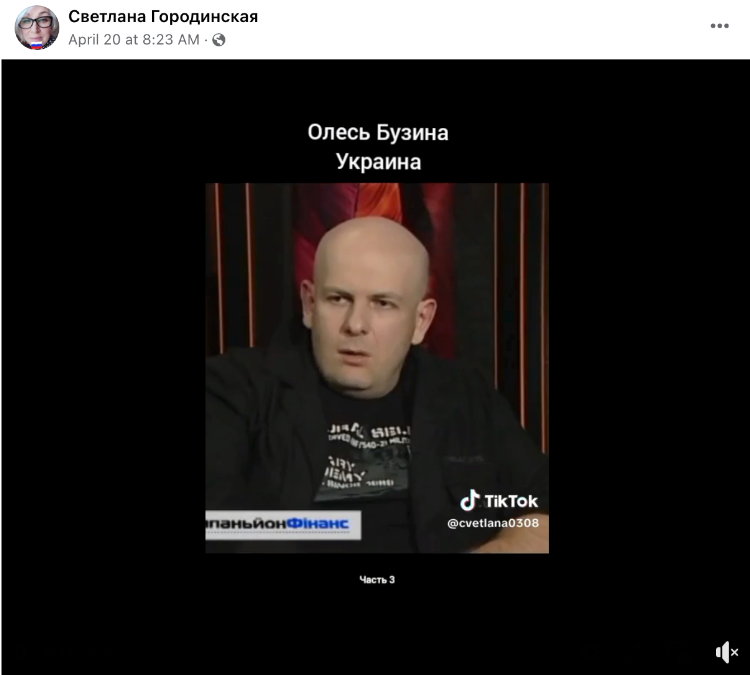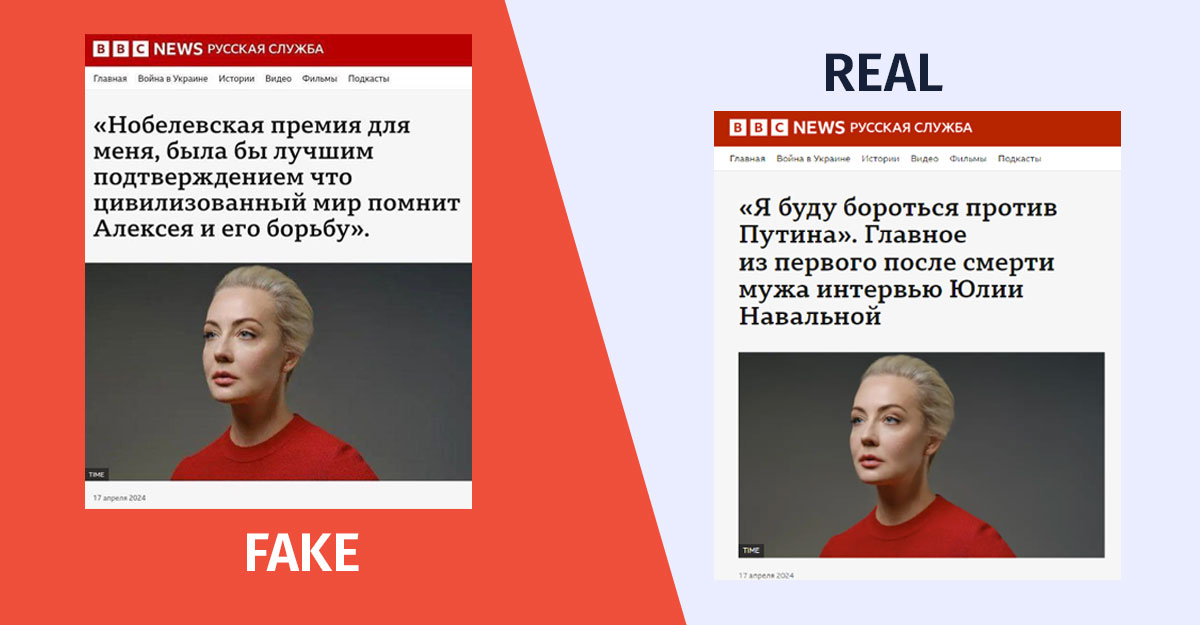On April 20, 2023, a Russian-language video was disseminated on Facebook, which argues that the Russian language in Ukraine is 400 years older than Ukrainian, which arose in the 16th-17th centuries under the influence of the Polish language.
The claim that the Russian language is older than the Ukrainian language and arose under the influence of the Polish language does not correspond to historical reality. The Ukrainian language, like Russian and Belarusian, is derived from the Old East Slavic language in the territory of Kyivan Rus. Although the development of the Ukrainian language was impeded until the 18th century, its foundations are much older – the East Slavic language group was formed in the 13th century after the collapse of the “Kyivan Rus.”
The Slavic state of Kyivan Rus was formed in the 9th century, in the part of Eastern Europe, on the territory of today’s Ukraine. It existed until the middle of the 13th century. Kyivan Rus was the historical foundation of modern-day Ukraine. The language in the mentioned state was Old East Slavic, from which various languages were later formed, including Russian, Ukrainian and Belarusian. Old East Slavic is often referred to as Old Russian, although many researchers disagree with this name. For example, Ukrainian historian Oleksandr Palj proves that many names of Russian princes were written in Ukrainian in the old chronicles, such as Olena, Danylo, Mychałko. American-Polish professor Alexander M. Schenker believes that the term “Old Russian” is anachronistic because, at that time, the Old East Slavic was not yet divided into Ukrainian, Russian and Belarusian languages. In addition, Schenker notes that depending on the political situation, the terms “Old Ukrainian” and “Old Belarusian” were also used at different times, and both of them were related to the Old East Slavic.

When the Kyivan Rus ceased to exist in the 13th century, linguistic differences also emerged between Ukrainian and other Slavic languages of Eastern Europe (Russian, Belarusian). It should be noted that during this period, the Ukrainian language did not have much space for development, as it was always politically dependent on others (Russia, the Polish-Lithuanian Commonwealth). According to Polish linguist Dr. Marian Jurkowski, Old Ukrainian developed from the 16th-17th century, and Modern Ukrainian from the 18th century. The turning point was the publication of Virgil’s “Aeneid” travesty, which was written in Ukrainian. The travesty was published by Iwan Kotlarsky, a collector of native folklore. “Aeneid” paved the way for the next generation, including the Ukrainian poet Taras Shevchenko, who brought elements of various dialects to the Ukrainian language and transformed them into one unified literary language.
As for the Polish language, it belongs to the West Slavic linguistic group.
It is also important that the Ukrainian language is not derived from the Polish language. However, since Ukraine was part of the Polish-Lithuanian Commonwealth for a long time, the influence of the Polish language is also significant in Ukrainian. In the 13th century, three linguistic groups were formed: West Slavic, South Slavic and East Slavic. The Polish language comes from West Slavic, while Ukrainian and Russian come from East Slavic. Therefore, it is wrong to claim that the Russian language is 400 years older than the Ukrainian language.
In the video, Oles Buzina, a Ukrainian journalist who was distinguished by his pro-Russian views, talks about the Ukrainian and Russian languages. Buzina was killed in Kyiv in 2015.
The claim that the Russian language existed in Ukraine 400 years before Ukrainian also amplifies the disinformation that the Kyivan Rus’ state is the historical foundation of Russia, not Ukraine.
It is worth noting that Kyivan Rus, which is often incorrectly referred to as Kyivan Russia, was established in the 9th century. The said state had close diplomatic relations with the Byzantine Empire and became a Christian state during the time of Vladimir the Great. During this period, the development of economic, educational and trade spheres begins in the Kyivan Rus.
Independently of Kyivan Rus, a trading settlement called Moscow was also developing, where Finno-Hungarian tribes lived and lagged behind Kyivan Rus in terms of development. Later, these territories became part of the Golden Horde, and Kyivan Rus ceased to exist.

In the later period, the Russian Kingdom, and later the Russian Empire, existed on the territory of Moscow. The Russian Empire needed a significant historical foundation to base the empire. That is why in 1721, Moscow stole the historical name “Rus” from Kyivan Rus and declared itself as the Russian Empire and Moscovites as Russians. In the following years, the chronicles, chronographies, archives and church documents of the conquered peoples were also destroyed so that no one could doubt Kyivan Rus as the “forerunner of Russia.”
For more, see:
The article has been written in the framework of Facebook’s fact-checking program. You can read more about the restrictions that Facebook may impose based on this article via this link. You can find information about appealing or editing our assessment via this link.
Read detailed instructions for editing the article.
Read detailed appeal instructions

























